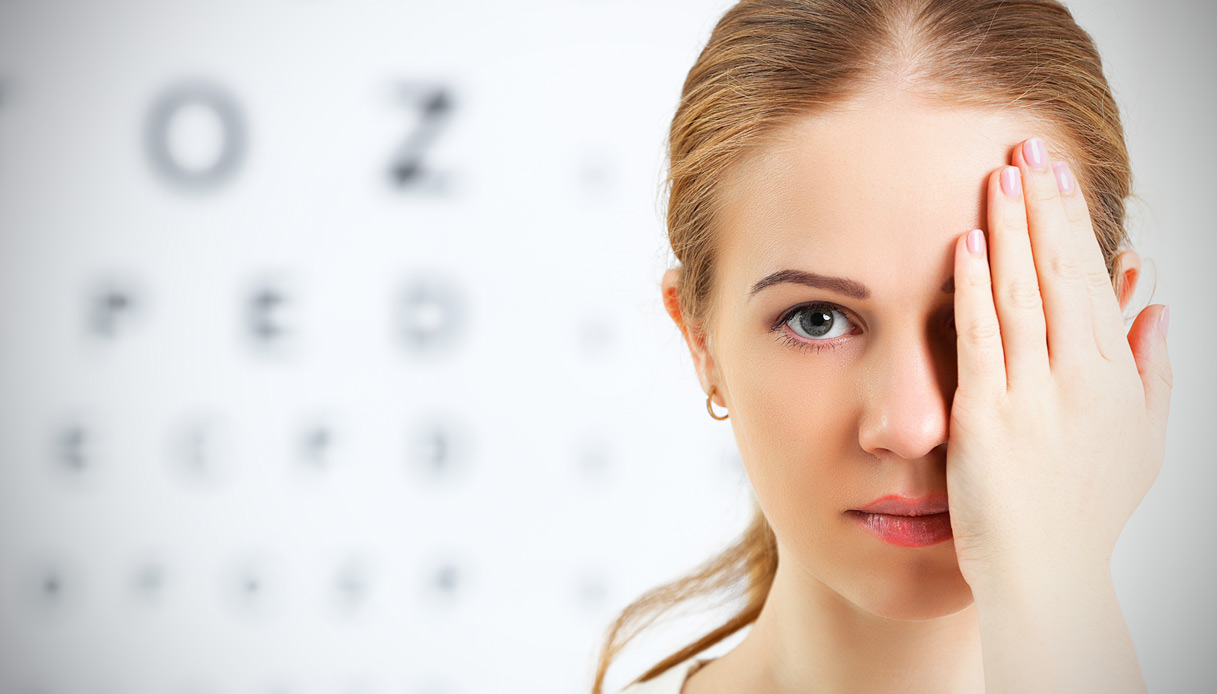Burning eyes, headache, sight that seems to cloud. The child often loses his mark while he reads, or perhaps always moves his head to follow a text, or even “slouches” on the desk to follow the lessons on the blackboard. If the child suffers in the first days of school, he may have vision problems, which may not have been discovered before. Obviously it takes the control of the ophthalmologist, but we must not forget that the lazy eye must be recognized and addressed. Maybe even with particular attention to sleep.
To recommend it is an Italian research: the study shows that sleep can help treat lazy eye syndrome since it helps to enhance the plastic activity of the brain in response to visual stimuli. The discovery comes from research published in the journal eLife and conducted by Danilo Menicucci, Andrea Zaccaro, Maria Concetta Morrone and Angelo Gemignani of the University of Pisa together with Claudia Lunghi, a former colleague of the University of Pisa now at the École Normale Supérieure in Paris.
How does sleep cure?
The research from the University of Pisa published on eLife proved that sleep enhances the plastic response of the brain with respect to visual stimuli. “Neural plasticity is a fundamental property of the nervous system that allows us to change our brain circuits in response to environmental pressure – explains Menicucci. This process is in place every time we acquire new notions or learn a new sport, but it is thanks to sleep that the changes become permanent ”.
The novelty of the study by the researchers of the University of Pisa was therefore to demonstrate for the first time that this function of sleep also applies to the plastic processes affecting the visual cortices. In fact, the question was by no means taken for granted given that the plasticity of these structures is traditionally considered poor and that, above all, it is based on mechanisms other than those underlying more classical learning.
The experimentation conducted exploited the most advanced techniques of sleep electroencephalography in combination with a manipulation of the visual experience. Some volunteers kept a bandaged eye for two hours and were then asked to sleep for another two. The researchers were thus able to verify that the effects induced by the eye bandage lasted longer than would have been the case if the subjects had remained awake.
“The brain of an adult person who is blindfolded for a few hours, then gives more importance to the visual inputs that arrive from the eye that has been blindfolded – says Menicucci – as we have shown, sleep helps to maintain this imbalance longer. , especially in those subjects who, while sleeping, produce more slow waves “. In fact, slow waves are a signal that indicates the consolidation activity of plastic changes in our brain. The study also found that together with the involvement of visual cortices there is also that of the frontal brain areas, traditionally linked to human reasoning and thought, proof of the complex integration between the areas that underlies the functioning of our brain.
It is important to recognize the picture
The results of this research could help clarify what happens to our brain after an injury and allow the refinement of new therapeutic approaches to lazy eye syndrome. But for now, it is essential to recognize some signs that something is wrong and to have the patient examined by the ophthalmologist. Since childhood. The eye for its complexity and delicacy and for the enormous amount of work he does must be treated with the utmost respect, consideration and attention.
There are many potential problems: in addition to myopia, hyperopia, astigmatism and strabismus must be kept under control. The examination, in addition to assessing whether the child sees well, should also assess whether the vision is acute both from far and near, that the details can be focused correctly and that the two eyes work well in pairs.
One of the most difficult things to discover is precisely the so-called “lazy eye”, that condition that experts call amblyopia. The phenomenon affects at least two out of a hundred children under the age of five, and is linked to loss of vision in one eye, with the other taking over the function. If you fail to intervene early – the ideal would be within three years but at least you need to provide for elementary school times, the problem can become permanent. (i.e. of an eye functionally with reduced vision even in the absence of obvious diseases).
If left untreated, amblyopia can lead to a deficit. The treatment can include the use of glasses for the correction of vision defects, the occlusion or penalization of one eye (in this way the lazy one can more easily recover) and a possible re-education up to a possible surgical intervention.
